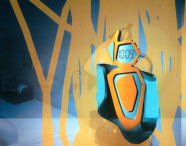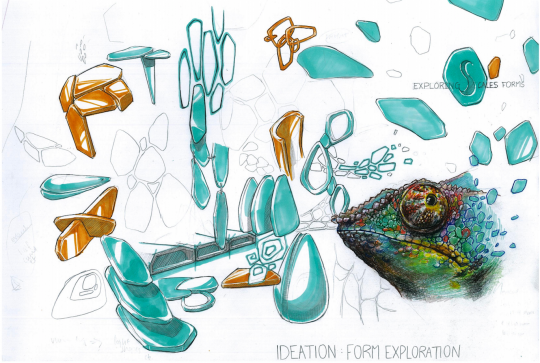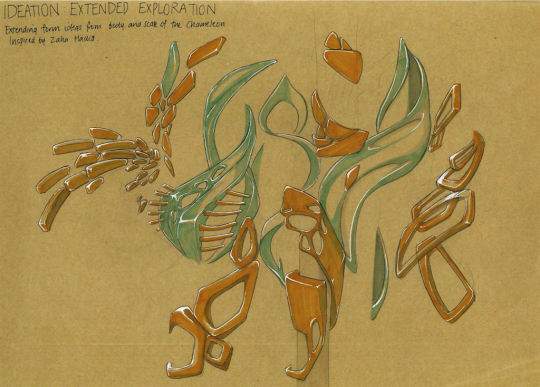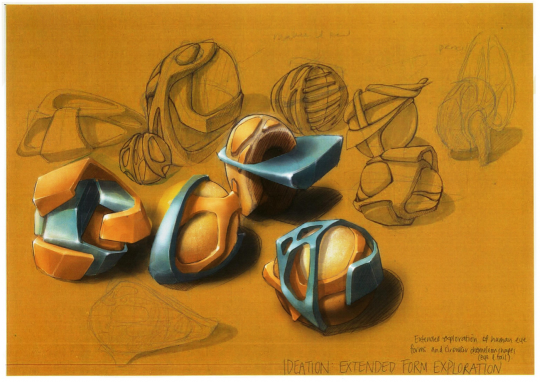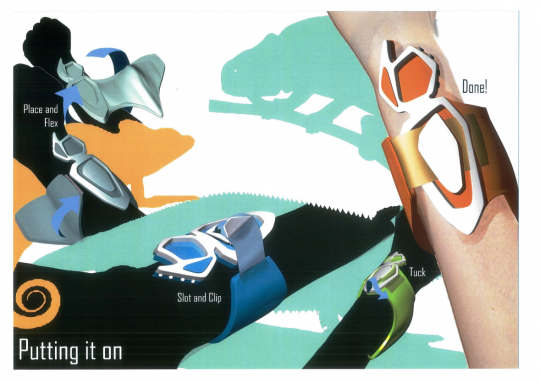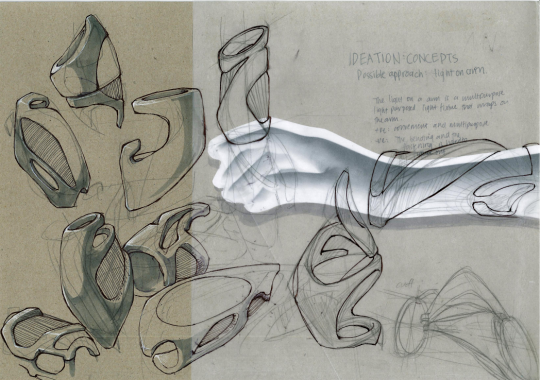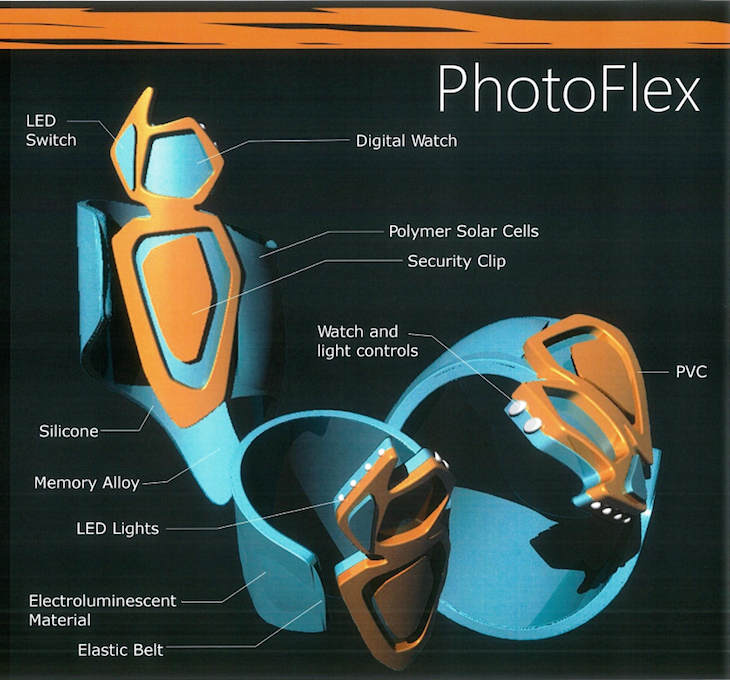Top scholar DVC: A wearable light product
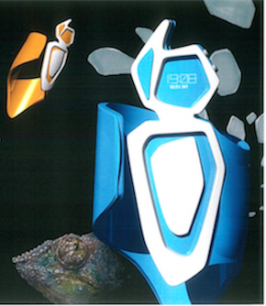 PhotoFlex!
PhotoFlex!

Jane Waterhouse, top scholar in Design and Visual communication (DVC), used a complex and interesting lizard to begin her ideation for her design.
Given design situation
- Select some inspirational material to explore and generate for lighting design
Outcome
- PhotoFlex – a multipurpose light product that wraps around the arm and is useful in a wide range of situations and environments
Ideation
Students at Epsom Girls' are encouraged to start with a captivating object to begin generating their design ideas. Chameleons provided a great starting point for Jane’s design work.
Chameleons wrap their hands and feet around branches and their skin has a multi-coloured and scaly nature.
Jane interrogated these aspects of the chameleon and then converged the wrapping shapes and forms with the scale forms to realise the beginning of her wrapped lighting product design.
Divergent and convergent possibilities
For a successful scholarship submission, students need to show that they have considered and interrogated divergent and convergent possibilities in design.
Jane demonstrated a well developed divergent thinking ability. One exercise she believes contributed to this was an in-depth study of the work of the creative thinking expert Edward De Bono (originator of the “six thinking hats”).
Getting past creative blocks
Jane has a couple of strategies she uses to move her design process forward when she hits a creative block.
One strategy is to explore the work of others. She admired the design style and developed aesthetic of the architect Zaha Hadid. The shapes had a similar aesthetic to what Jane had imagined for her lighting product. She used the inspiration she gained from Zaha’s work to extend and focus her ideation.
Jane continues to use this strategy in her projects at the School of Architecture, Auckland University. For example, in one of her projects she has focused on the materiality and shape of the architectural work of Tadao Ando in her design for a lighting pavilion project.
Researching and creating a board on Pinterest is another successful strategy. For example, Jane has used Pinterest to record what others have done with a design theme she is pursuing and for exploring different presentation ideas.
Final design elements
Jane liked the flowing form that evolved from her ideation design work and could see that this could work well for her lighting project. She explored divergent products that the light could be wrapped around, including a tree and an umbrella.
The chameleon also has a complex eye. Exploration of this and the human eye lead to the divergent idea of a clip-on light (for a cap or glasses) or a light wrapped around a ball. The user could throw the ball to wherever the light was needed.
Jane eventually discarded these ideas because it could be difficult to clip the light on securely and carrying the ball in a pocket might not suit a wide audience.
Jane finally settled on a wrap-around lighting product for an arm – this could be used in multiple situations and would suit a wide range of users.
Presentation techniques and strategies
DVC scholarship students are required to employ presentation techniques to promote selected ideas in a coherent and convincing manner with visual impact.
Jane has always been strong with pencil as a medium but in year 13 she used as many mediums as she could get her hands on.
Critically analysing the portfolios and visual techniques of other scholarship students was extremely useful. A top scholar (2009) submission of a car design drew Jane’s attention because she felt the final design was convincingly portrayed. She thought contributing factors were the student’s obvious technical knowledge of motor vehicles and of the drawing tool they used.
Tools Jane found useful
The 2009 top scholar had used a Wacom drawing tablet. Jane purchased one and found that using a pen and being able to undo drawings were particularly attractive aspects. She also scanned pencil drawings into the tablet and touched them up.
Jane also began to use Rhinoceros – a 3D drawing and modelling software package. She felt that this made designs look more like a fully realised product without design drawing lines.
Material
The material Jane chose for the final product was silicone, which meant a lot less rendering than if it had been glass.
Exhibition banner
During year 13 the students were expected to complete one architectural project, one product design, and an exhibition at the end of the year. Jane chose to do her exhibition on her product design.
Jane organised a banner print of her design for her exhibition. When designing the banner, she had to consider the height, where it would be viewed, the resolution, and that the file sent to the printer would result in a sharp print.
Jane wanted the print to be in a place where people would notice it in their daily movement. She selected halfway up a staircase on the way to the graphics room. This provided a strong back lighting and made the contrasting black and white aspects stand out. The simple design was eye-catching and had many students stopping to look.
Also very persuasive were the Photoshop illustrations of Photoflex being used by a motor mechanic, a cyclist, and a runner.
Technical aspects
Jane carried out extensive investigation into the technical aspects of Photoflex.
Luminescent material for diffuse light and LED lighting was included to address the requirement for different lighting types. The lighting only required a small amount of power so a solar panel was incorporated for on the go charging and to add a sustainability element.
The physics teacher suggested to Jane that a breadboard would be a good solution to keep cabling to a minimum.
A friend had recently started using a fitness band and complained he could no longer wear his watch. This inspired Jane to incorporate a watch in the band.
You can find the scholarship portfolios on the NZQA website at New Zealand Scholarship Design and Visual Communication.

